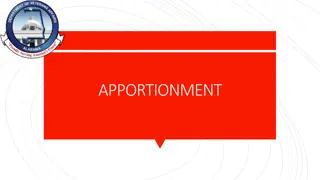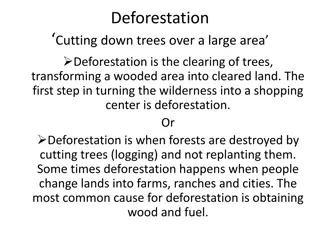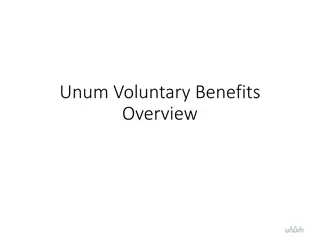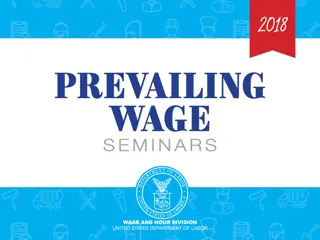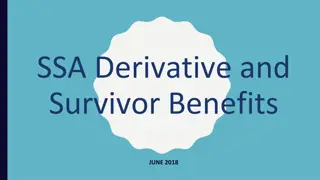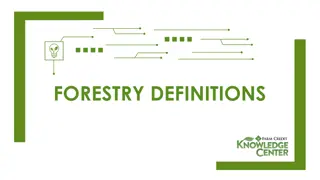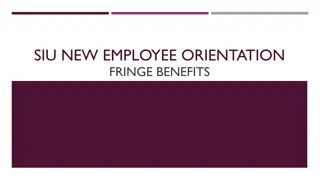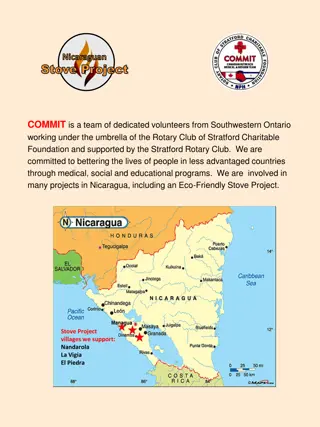Understanding Reforestation: Process, Impact, and Benefits
Reforestation involves planting trees in areas affected by tree loss, with benefits such as habitat restoration, carbon dioxide removal, and climate mitigation. Organizations like One Tree Planted play a crucial role in reforestation projects worldwide. This process includes assessing land conditions, selecting suitable tree species, ordering seedlings, and maintaining planted trees to ensure successful growth and environmental impact.
Download Presentation

Please find below an Image/Link to download the presentation.
The content on the website is provided AS IS for your information and personal use only. It may not be sold, licensed, or shared on other websites without obtaining consent from the author. Download presentation by click this link. If you encounter any issues during the download, it is possible that the publisher has removed the file from their server.
E N D
Presentation Transcript
Reforestation the process, impact, & benefits
Reforestation, Explained. Subscribe to One Tree Planted: https://bit.ly/2IsCtqc ?Plant one tree: https://onetreeplanted.org/reforestation-plant-trees What is reforestation? Reforestation is the planting of trees in areas that have suffered from tree loss. One Tree Planted has reforestation projects all over the world and we plant trees for many, many reasons. Some of our reforestation projects focus on habitat restoration, some focus on replanting trees (when and where it's required) in the aftermath of huge forest fires. We also plant to secure water supplies, to help farmers shift from destructive agriculture, and of course, to remove carbon dioxide from the atmosphere. Reforestation is the best tool we have to prevent or mitigate climate catastrophes. Reforestation is in the news, and it's now the UN's decade of Ecosystem Restoration. From trillion tree challenges to the Great Green Wall, and record-setting attempts by national governments, reforestation is here, and it's growing bigger and bigger every year. But what does a reforestation project actually look like? It really depends on the project and the needs and species of the area! Watch the video to learn about what reforestation is, what it looks like, and why One Tree Planted is the leading reforestation charity in the world! ?Want to learn more and plant one tree? Visit our website at https://onetreeplanted.org/reforestation-plant-trees ? About One Tree Planted: One Tree Planted is a 501(c)(3) non-profit organization and we plant trees! We are a tree-planting charity with a goal: to make it as simple as possible for anyone to plant trees. One dollar. One Tree. We also run hundreds of tree planting events around the world for people to get outdoors and plant trees in their local communities. Follow what One Tree Planted is up to: ? Official website: https://onetreeplanted.org/reforestation ? Instagram: https://instagram.com/onetreeplanted Facebook: https://facebook.com/onetreeplanted ? Twitter: https://twitter.com/onetreeplanted MB01OXVTORG2CJA
Review Questions 1. What is deforestation? 2. What are some of the causes of deforestation? 3. What is reforestation? 4. What are some of the reasons for reforestation? 5. What are the steps of reforestation for the One Tree Planted Organization? a. b. c. d.
LOCATION TREES ORDERING PLANTING MAINTAINING When locations are determined, several details need to be examined before the first tree is planted to ensure a positive social and environmental impact. This includes assessing the current condition of the land and land use. It also includes preparing the land for the planting process. After the location is determined, foresters and conservation scientists must determine which trees to plant. Typically, this includes knowledge of plants native to that area and plants that will thrive in the selected location. Scientists must also determine how many trees can be planted in the selected location. Once the tree species is decided, the trees must be ordered. Seedlings and saplings are ordered in large quantities. Use of seedlings and saplings is more effective than artificial and natural seeding practices. Seedlings and saplings are planted during effective growing seasons. Planters must also take into consideration the conditions of the land and soil prior to planting-depending on the type of deforestation that took place. Once the seedlings and saplings are planted, they must still be monitored and maintained to ensure proper growth. This monitoring and maintenance can include weeding, clearing of brush, watering, repairing supports for saplings, and replacing dead/damaged plants. Steps of Reforestation
Trees store carbon dioxide in their leaves, trunks, and roots - reducing greenhouse gases Removes air pollutants Prevents soil erosion by growing roots that hold the soil together Benefits Provides habitat insects and animals Reduces the impact of global warming and climate change Helps to protect endangered species Filters our drinking water through their roots Prevents floods and landslides by absorbing water and slowly releasing it via transpiration
Reforestation at The Confederated Tribes of Grand Ronde Silviculture and Fire Protection Program at the Confederated Tribes of Grand Ronde promotes the Tribal tradition of being good stewards of all natural resources by protecting and maintaining forest health and productivity for future use. Reforestation of land following harvest locations is an important factor in assuring the continuous growth and harvesting of trees. The Confederated Tribes of Grand Ronde manages and maintains approximately 11,000 acres of land.
Controlled burns and machinery are used to clear extra vegetation and logging debris. This helps to reduce fire hazard, provide room for planting of tree seedlings, lessen initial competition from other vegetation, and limit the cover for seedling damaging rodents Site Preparation Planting seedlings and saplings is the primary method of reforestation on the Reservation. Douglas-fir is the major species planted, comprising 85 to 95 percent of the total trees. Methods CTGR works with the BLM to obtain seeds from its forest genetics program. The seeds have been genetically controlled for growth, tree form, and resistance to disease. Seed Source Monitoring Improvement activities such as thinning, fertilization, and pruning promote growth and maintain health and productivity.





